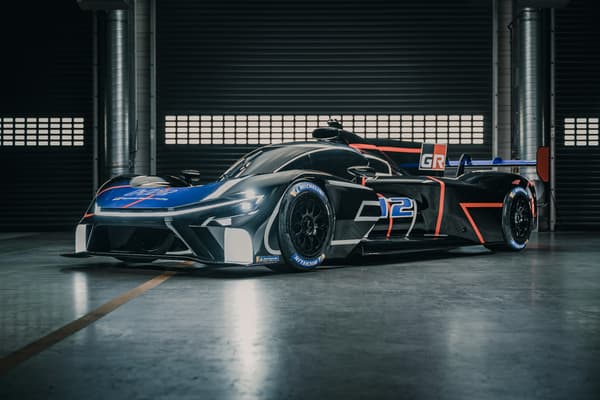Hydrogen cars will soon compete at the 24 Hours of Le Mans alongside V6 or V8 twin-turbo hybrids. This is the wish of the Automobile Club de l’Ouest (ACO), which has supported the Mission H24 project for several years.
A project that materializes again this year with two competition prototypes, one of which will run at the start of this Saturday’s race. Before the regulations allow teams with hydrogen cars to compete in 2026 in the premier class of hypercars.
“The goal we have since 2017 is to have a maximum category at Le Mans with zero CO2 emissions and, for endurance, hydrogen is quite adequate with a refueling time similar to that of a gasoline car and a range practically equal to that of a a car. gasoline car”, explains Pierre Fillon, president of the ACO, in BFM Business.
“It’s a rolling laboratory to learn, because hydrogen is not as easy to use as gasoline,” continues Pierre Fillon.
A fuel cell, almost 300 km/h peak
The Mission H24 team includes in particular GreenGT, a Swiss company specializing in high-performance motorsports and a partner of the ACO. Also working on the Michelin, Symbio, Plastic Omnium and TotalEnergies project.
“It is a fuel cell that makes the car work”, explains Antoine Larroque, Mission H24 team manager, about the first prototype developed, the LMPH2G.
“To create electricity, we will use the hydrogen that is in the three tanks and we will extract the oxygen from the air, through a compressor. [dont l’entrée est sur le toit de la voiture, ndlr]a chemical reaction produces electricity that drives the car”, adds the engineer.
Performances are gradually approaching those of the hypercars competing this year, although there is still a long way to go before we see them run on a level playing field. The second most recent prototype, the H24, set a speed record of 290 km/h. During the test day on Sunday June 4, the #7 Toyota GR010 Hybrid recorded a top speed of 342.3 km/h, a difference of more than 50 km/h. Among the technical advances to record, Mission H24 highlights the work on weight.
Powered by green hydrogen
The laboratory goes far beyond the car, since it also refers to infrastructure. The ACO is working on a permanent installation project to supply the cars, through pipes directly in the garages, with hydrogen tanks that will be behind the paddock, explains Pierre Fillon.
However, the question arises as to the real carbon footprint of hydrogen, which is truly virtuous if it is produced from renewable energy. “Hydrogen is of no interest if it is not green hydrogen,” says Pierre Fillon. Green hydrogen produced from wind turbines in the Vendée already powers a bus in the Le Mans conurbation.

Hydrogen for heat engines
The ACO is not alone in its evangelization around hydrogen: Alpine is displaying its Alpenglow concept car on the site, unveiled at the Paris Motor Show last year. Toyota is also a partner in the Hydrogen Village, the showplace for these cars at the circuit. Some manufacturers are also working on a slightly different technology: the hydrogen combustion engine.
“It’s a bit like a conventional heat engine, except we’ll come in and burn hydrogen, so we’ll always have some emissions in the exhaust, so we’re not 100% zero emissions even if we emit less than a conventional engine.” heat engine”, explains Antoine Larroque.

This is the technology chosen by Toyota and featured in this hydrogen-powered prototype race car, the “GR H2 Racing Concept”. A sample of the future racing car presented this Friday June 9 by his partner Akio Toyoda, present at the Sarthe circuit.
Source: BFM TV

